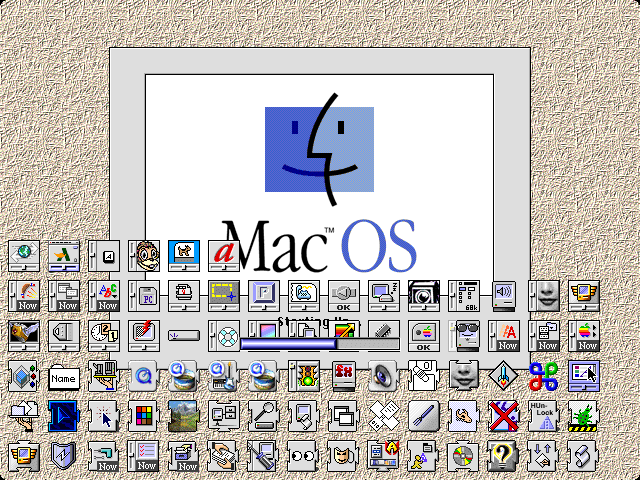
- Using disk copy in basilisk ii install#
- Using disk copy in basilisk ii software#
- Using disk copy in basilisk ii download#
I’ve written a separate blog entry that lists all of the different Macintosh 68k systems and which System versions they support. Transfer files files to your running system.Creating a drive image using an emulator, or from a physical disk.Copy (Volume/Partition image) or Write (Drive image) to your target media.Add or remove content from my images using an emulator or some other tool.Review the contents of my images (last updated 1).Determine which type of image file you need to/want to use.
Using disk copy in basilisk ii software#
Choose what System software you want, you can read my blog entry for which System versions can be run on which Macintosh Computers.I use the applications found on my System 7.5.5 drive and partition images, and the Apple CDs for many of the guides found on this site.
Using disk copy in basilisk ii download#
I also suggest you download Apple’s Applications Recovery CD, Apple’s Legacy Software Recovery CD, Apple’s System Recovery CD from the internet archive.

These files can be copied to the target media (the target media is not reformatted as HFS).īlanks: 32MB HFS, 2GB HFS and 32MB ProDOS. Use Basilisk II to copy files on to these. Use balenaEtcher or DD to write these files to the target media (media is reformatted as HFS)īlanks: 32MB HFS, 100MB HFS, 1GB HFS. Use Basilisk II, Mini vMac, or some other tool to mount the volume files on the SD card and edit their contents.īlanks: 8GB HFS, 16GB HFS, 32GB HFS, 8GB HFS + ProDOS, 16GB HFS + ProDos, 32GB + Prodos.ģ.2 (32MB), 4.1, 5.1, 6.0.8, 6.0.8L 1, 6.0.8P 2, 7.5.5 3

Use balenaEtcher or DD to write these files to an SD card (reformatted as Fat32)
Using disk copy in basilisk ii install#
I only provide minimal bootable images for Systems 3.2, 4.1, 5.1, 6.0.8, 6.0.8L, 6.0.8P and 7.5.5, but I’m adding guides to my site for how you can install full versions of these and other versions up to System 8.1 using Apple’s Legacy Software Recovery CD and other sources on the internet. If you’ve never used my bootable images, or don’t know the difference between a drive image or volume image them I suggest you read the rest of the page below before trying to use these files. This page contains a list of all the files that can be downloaded from my site for use with 68k Macintosh systems, specifically the bootable image files I’ve created for use with emulators, the SCSI2SD, the MacSD, the FloppyEMU, Zipdrives, Jaz Drives, Floppy drives and CDROM drives.


 0 kommentar(er)
0 kommentar(er)
